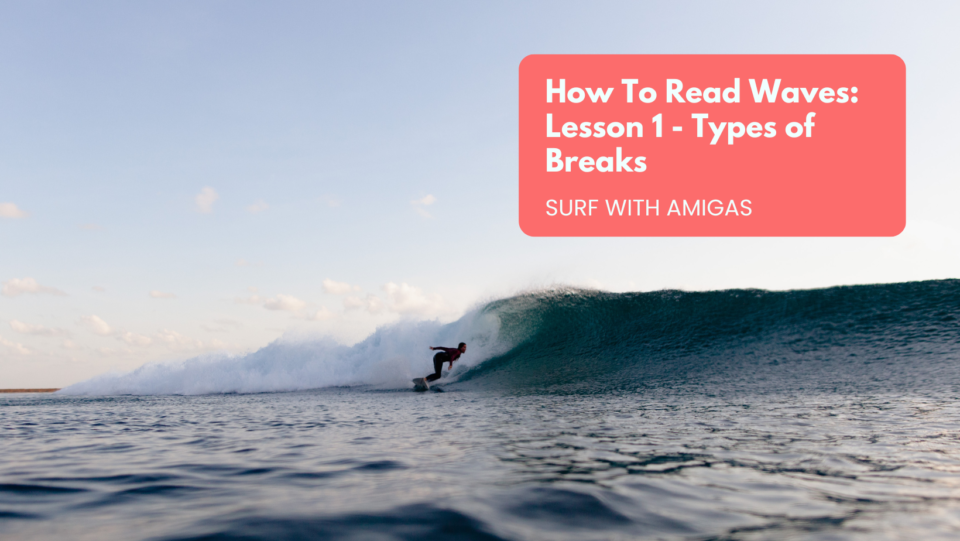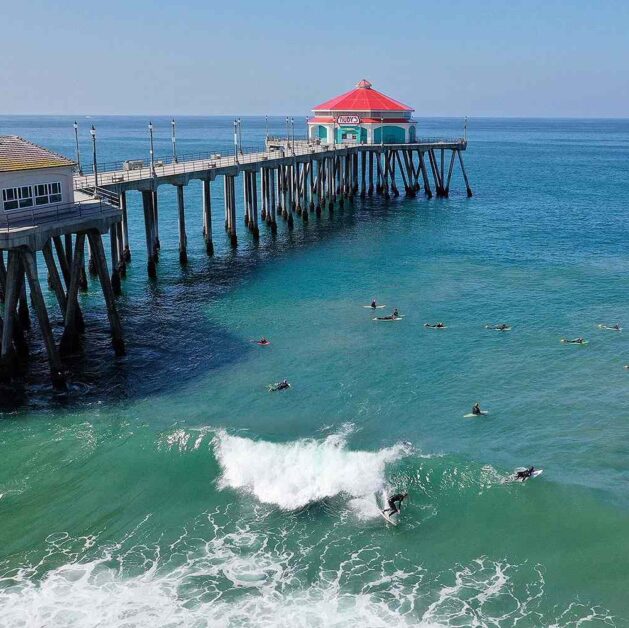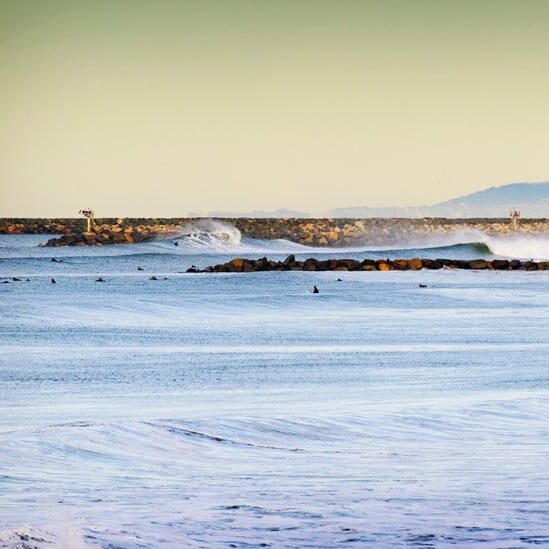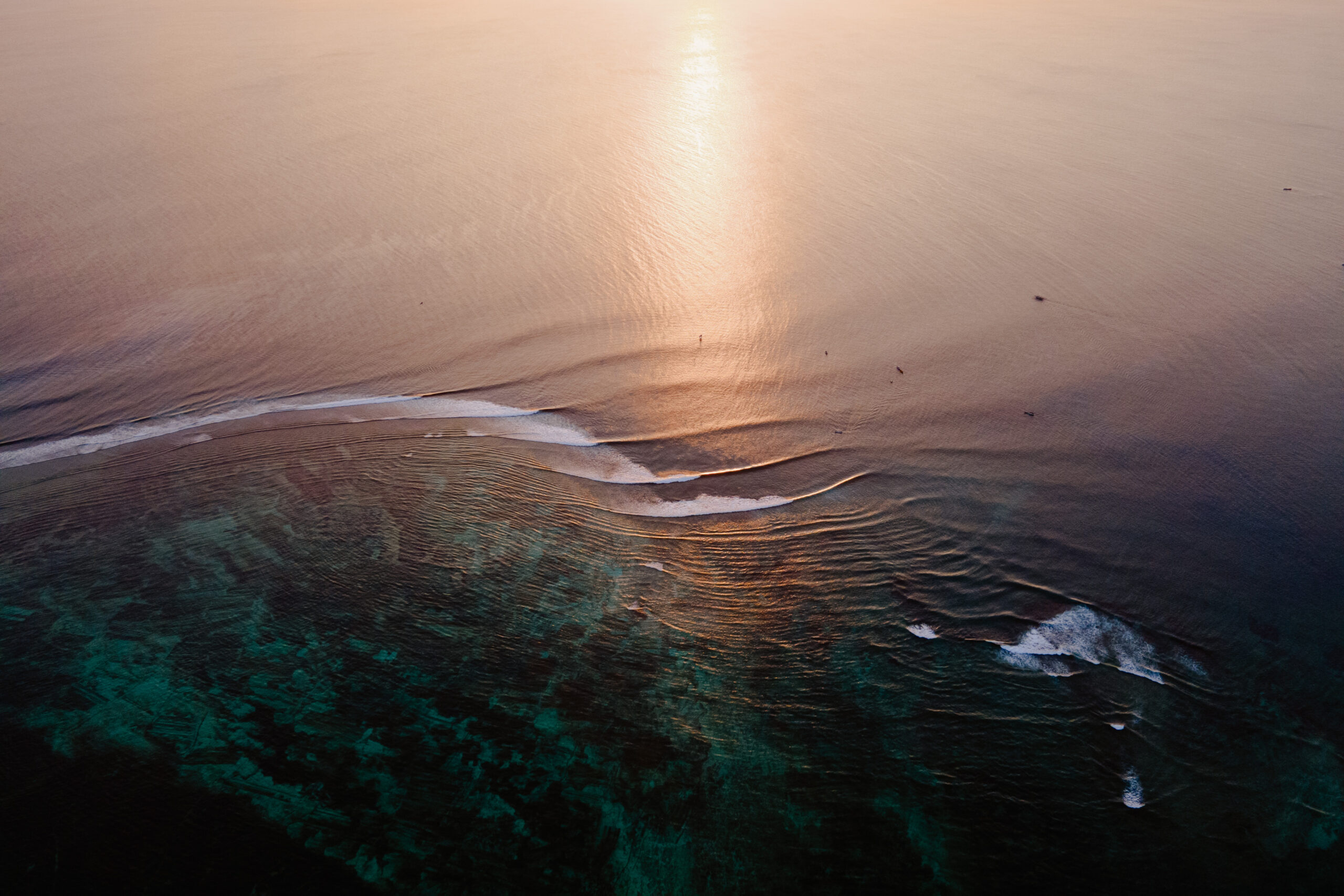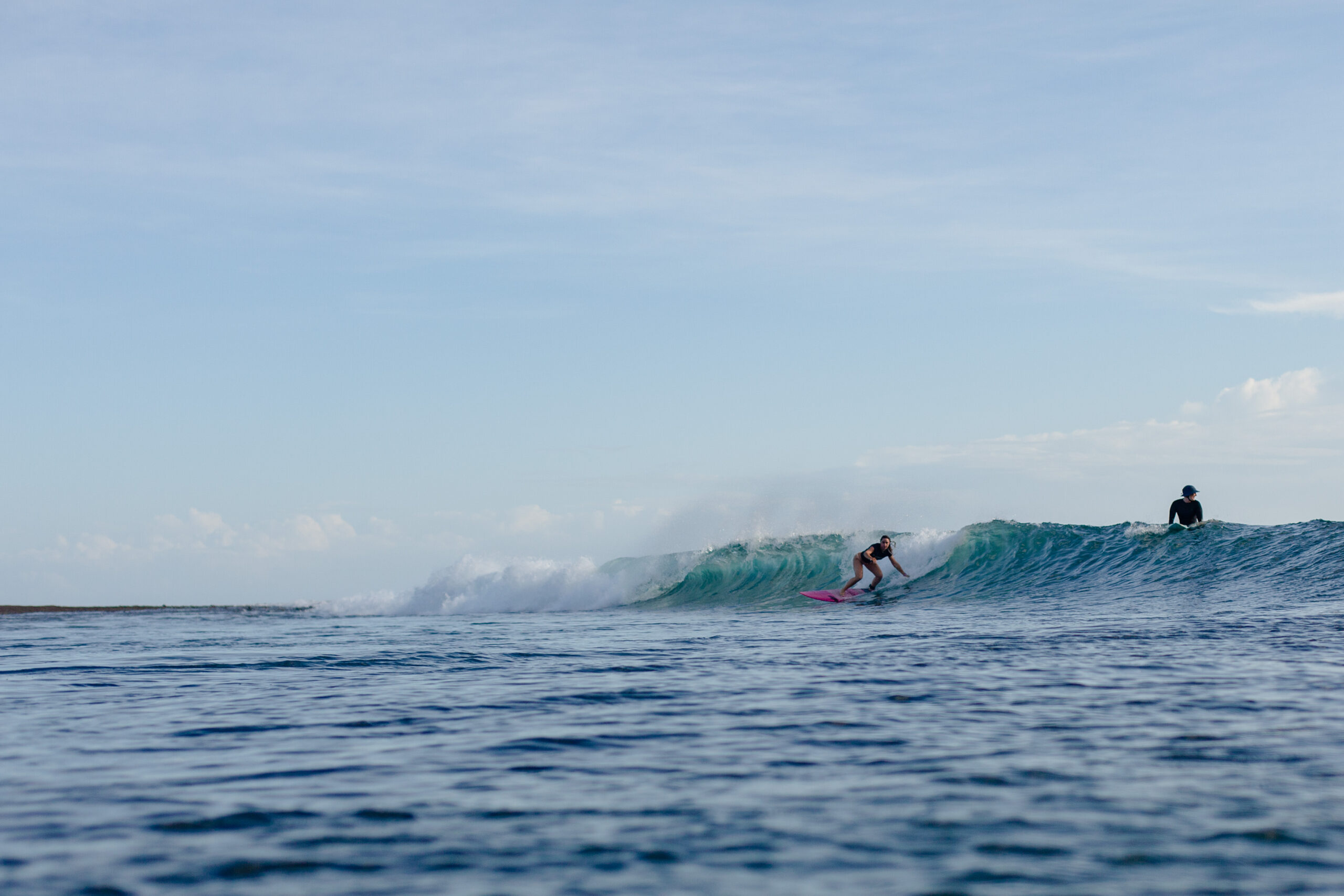The first thing a new surfer wants to learn (after they’ve learned the very basics of how to stand up on a wave) is how to “read” waves. We practice this in-person during surf sessions at our retreats, and while we wish there was a secret password to unlocking this mystery that we could easily share with you, it’s actually a complicated skill to learn which takes years to grasp and a lifetime to master.
When you think about it, reading waves is actually like predicting the future. You have to look at a lump of water and be able to anticipate what it’s going to look like in 5, 10, 15 seconds and then position yourself accordingly. Not an easy task! But, there are some shortcuts and tips that we can share to give you a jumpstart. This is the first lesson in our series, so read on to learn more about the different types of waves. If you want to get the full experience, join us on a retreat to have these features pointed out to you in person!
How do waves work?
Have you ever been watching surfers from beach thinking “man, they make that look so easy” or “why didn’t he go for that wave?” If you’ve never tried surfing it’s easy to think it looks like a paddle out, surf a wave cycle on repeat. If you have surfed before, you are aware there is much more to surfing than that and 90% of your time in the ocean is spent either paddling (out, over, in, for a wave, to avoid a wave you don’t want) or sitting on your board studying the horizon looking for a wave to ride.
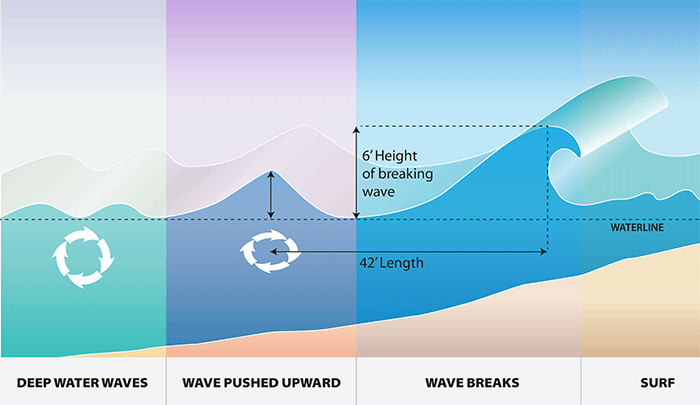
To start with the very basics, here’s a graphic showing how waves work. Wind blows over the ocean surface pushing surface water up into waves. The wind-blown waves will travel on indefinitely until they encounter a shallow bottom surface, which slows down the bottom part of the wave, causing the top part of the wave to topple over and form a breaking wave.
The abruptness of the change in bottom contour affects the power of the breaking wave. Imagine yourself jogging. You trip over a speed bump and slightly topple over but are able to keep running. This is a wave encountering a gradually sloping bottom or very small sandbar or with a high tide. Now imagine you trip over a curb. Your fall will be more complete and harder. This is what happens at a medium tide. Finally, imagine tripping over a waist high wall – you would double over with force. This is what happens at low tide or when a wave hits a shallow reef sitting in deep water.
How fast you’re running will make a difference as well. So imagine the speed of your run to equal the strength of the swell, and the thing you trip over to be the ocean bottom contour, whether it’s rock, reef, or sand.
Being able to read waves is one of the most difficult skills to master in surfing. The way you approach waves changes from wave to wave, day to day, and surf break to surf break. Only time and experience can get you to know when you should paddle for a wave or skip it. There are many aspects to reading waves but starting with the very basics : knowing what kind of break you are surfing is step one to gaining the knowledge of wave reading. Ok, onto the different types of bottom contours…
three main types of breaks

1. Beach Breaks:
Beach breaks are waves breaking over a sandy bottom. They are usually the most consistent types of breaks – meaning there would be surf-able waves on most days – since little swell is needed for waves to break over the sandy bottom.
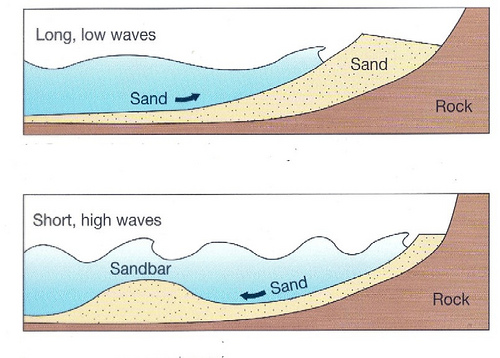
Waves break on sandbars that form on the ocean floor due to currents and wave action. The sand bars can shift with different storm and swell patterns which means that waves don’t break in the same spot every time.
With all the water coming towards shore via waves, that water needs a way to get back out to sea. This is how riptides form.
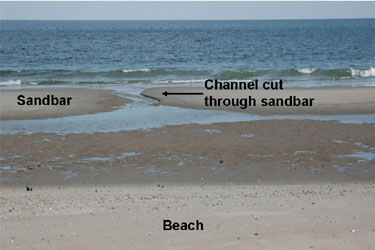
In the photo above you can see a low tide beach scene. The sand bar is visible along with a break in the bar caused by the water heading back out to sea that pulls sand with it. Since the water is deeper over the break in the bar, waves will be less likely to break there.
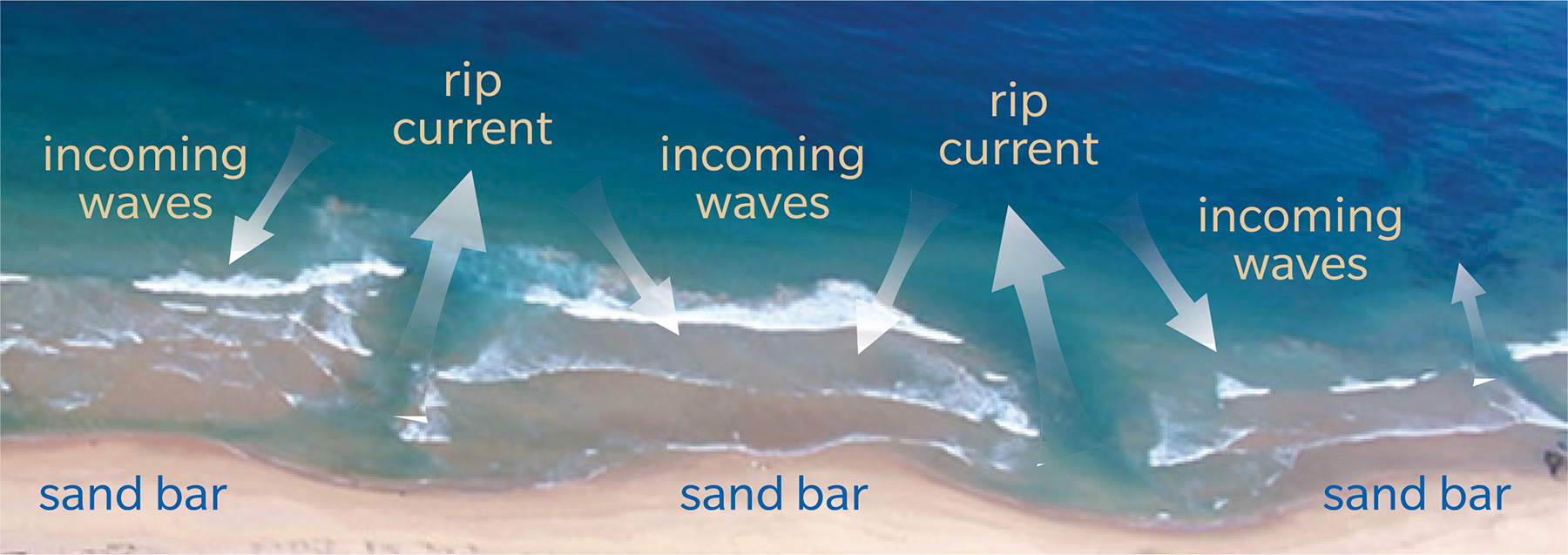
A rip current is a great place to choose to paddle out. Not only is the current going to take you out to sea, you will also likely have fewer waves coming at you to have to duck-dive or turtle-roll. When sitting in the lineup looking for a wave to catch, you want to avoid sitting in a rip tide for the same reason : waves will be less likely to break there and those that do will usually be choppy from all the outrushing water.
If it has been a long time since a swell or storm has broken up the sand bottom then the sand can settle and flatten which means that breaking waves will be more likely to close out – meaning to break all at once without any opportunity for a long ride.
Other factors such as piers, jetties, and storm drains may dictate what may happen to a sand bar and also where the rip tides form. Those factors can create a more consistent sand bar which is why you often see surfers crowding these areas.
Beach breaks are great for learning because there is little to worry about in the way of obstacles such as rocks and reefs. Waves will be breaking in multiple places which helps spread out the crowd. Also the waves are usually consistent, giving beginners plenty of tries to get the hang of surfing and more advanced surfers plenty of waves to practice on.
Our Northern Nicaragua Retreats and Northern Costa Rica Retreats are all primarily held at beach breaks.
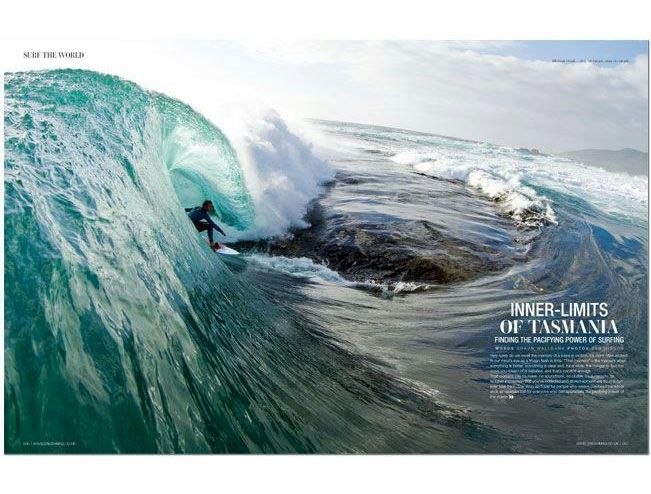 2. Reef Breaks:
2. Reef Breaks:
A reef break is a surf spot that has anything from smooth rock to razor sharp reef beneath the breaking waves. Since the reef doesn’t move around, these waves will break in generally the same spot and will be more predictable than a beach break.
Often times waves breaking over a reef have more power because when the swell energy approaches the reef, the abrupt change in bottom (material or depth) creates a more hollow wave. At lower tides reef breaks can be dangerous if the reef is shallow (note photo in the beginning of this section of dry rock visible very close to the surfer!).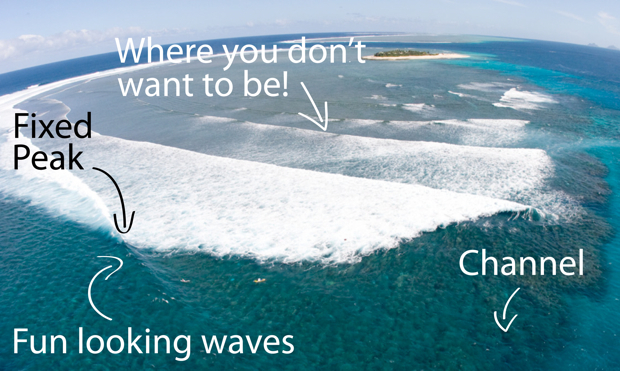
Reef breaks are more predictable than beach breaks. The takeoff spot rarely varies very much so you can study where the waves are breaking, look towards the beach, choose a lineup marker (palm tree, hotel, lifeguard tower etc.), and then paddle directly to “the spot” each time, knowing that when the waves come, you’ll be in a good spot to catch one. Reef breaks typically have a consistent channel allowing you to paddle out easily. Since the takeoff spot is so predictable, crowds can often be more of an issue at a reef break than they would be at a shifty beach break.
While the potentially sharp and hard bottom of a reef break makes these spots more suited to more advanced surfers, there are some user-friendly waves that do break over reef. If you are a beginner planning to tackle a reef break, it’s a good idea to have a friend or someone like Surf With Amigas point you in the right direction to help you find the channel and avoid getting stuck inside on the reef.
If you are used to surfing beach breaks reef breaks are a great way to switch it up. They will force you to be more aware of your surroundings (shallow bottoms, line ups on the beach) and often offer better wave shape with the potential for a longer ride so you can practice new maneuvers in your surfing and have more time to think about what you’re doing.
On our Rote Island, Indonesia Retreats you would have an opportunity to surf a variety of reef breaks. If you join us on a Northern Nicaragua Retreat and we have some swell, we’ll get a chance to surf a fun reef break as well.
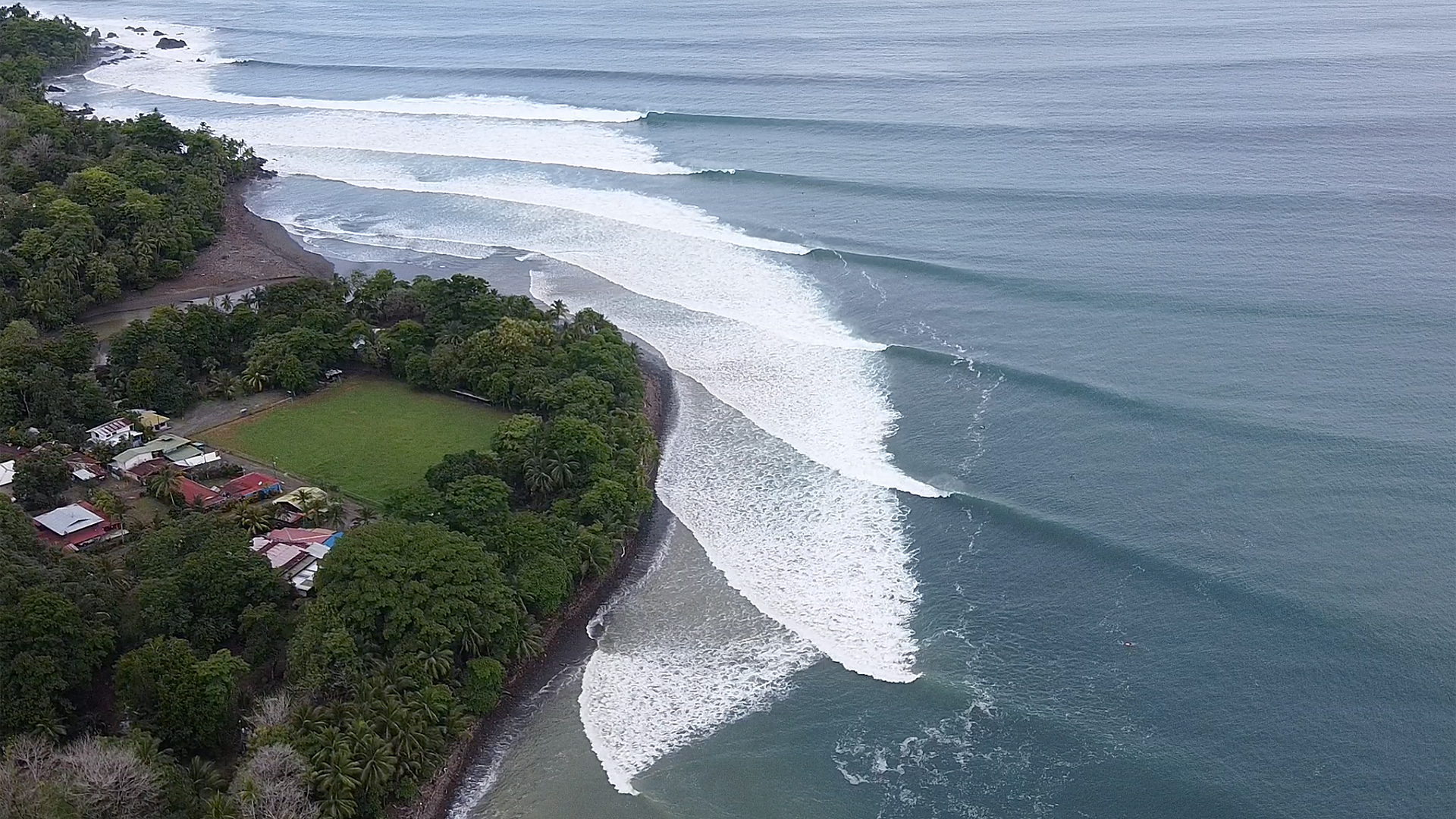
3. Point Breaks:
Point breaks are the quintessential wave you see in a surfer’s notebook doodles. The longest waves in the world are point breaks. The most well formed points come off of peninsulas that jut out into the ocean or some other feature underwater causing sand to build up to form very very long waves. They can have rock, reef, sand bottoms or a combination of rock or reef and sand (the rock or reef would act to hold the sand in place). Swell energy bends and peels along the peninsulas forming long, sometimes “perfect” waves.
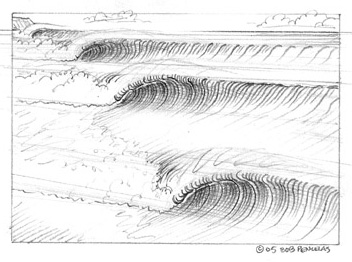
The waves forming off these points break in the same direction, so they are either all breaking left or all breaking right. Like a reef break, the waves will typically begin breaking in the same spot and are therefore relatively easy to predict.
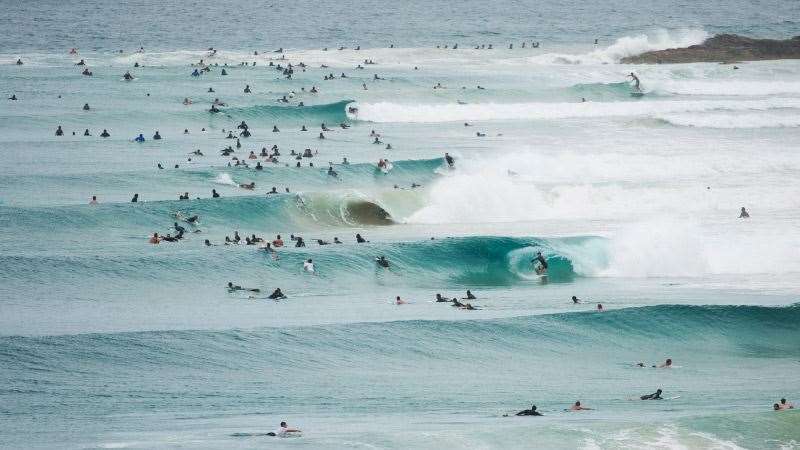 Point breaks are often times crowded due to their tight takeoff point and very long high quality rides. On a good day, riding a wave from the peak may turn into a slalom course with the surfer on the wave having to maneuver around surfers waiting for their own waves, paddling out, or trying to drop in. Unfortunately, point breaks are usually tucked alongside headlands that can block swell energy making them more fickle and require a larger swell than either reef breaks or beach breaks to make them work.
Point breaks are often times crowded due to their tight takeoff point and very long high quality rides. On a good day, riding a wave from the peak may turn into a slalom course with the surfer on the wave having to maneuver around surfers waiting for their own waves, paddling out, or trying to drop in. Unfortunately, point breaks are usually tucked alongside headlands that can block swell energy making them more fickle and require a larger swell than either reef breaks or beach breaks to make them work.

